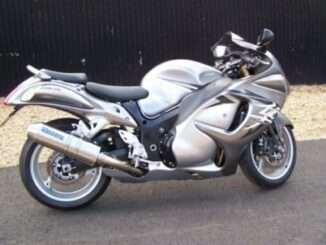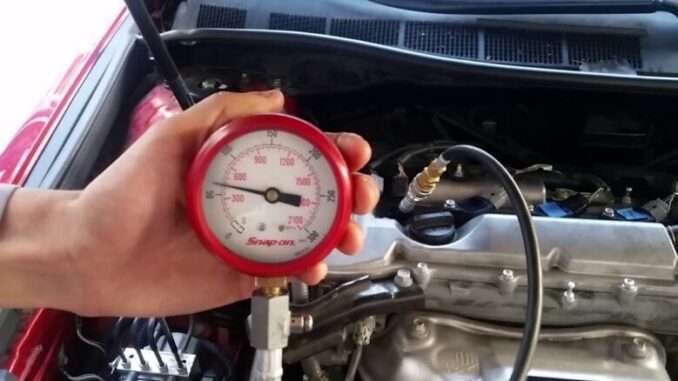
Firstly, a running dynamic compression test, confirms how effective each cylinder is, at pulling air in.
Secondly, holding it for the correct amount of time, then letting it go, into the exhaust.
So, if a cylinder cannot perform these functions properly. Then, the result can be, a loss of volumetric efficiency or a engine misfire.
In my opinion, you should NEVER do a a running dynamic compression test. Unless you understand why you are doing that test. As well as, what you will do with the results.
A running dynamic compression test, can also be used to pinpoint, the cause of a misfire. Subsequently, even when all the usual tests, return normal results.
So, this test should not be confused with similar tests, that are used for different results:
- When you do a cranking (static) compression test, you are checking cylinder sealing, not cylinder breathing.
- When you test engine vacuum at the manifold, you are looking at the breathing of the entire engine. Consequently, by checking vacuum, at a common (plenum) source.
- Also, when you do a cylinder leak down test, you are actually checking, cylinder leakage.
- A cylinder power balance test measures power, that a particular cylinder contributes, to the total power of the engine.
A running dynamic compression test, uses a compression gauge, to check individual cylinder breathing. So, basically you are checking, how well your engine, is inhaling and exhaling.
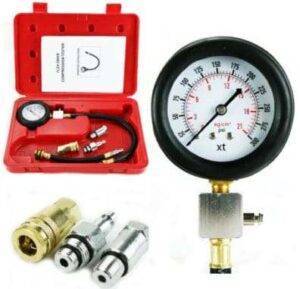
NOTE: You could use a Lab Scope and Pressure Transducer to see the results. But, we are going to perform this test, using a basic engine compression testing gauge.
Consequently, this test does combine, some other testing as well. You will be looking at the overall results, as well as comparing measurements, between cylinders.
How To Do A Running Dynamic Compression Test
Firstly, create a chart similar to this example, to record your test readings.
| CYL | CRANKING (STATIC) | IDLE | SNAP |
| 1 | ? | ? | ? |
| 2 | ? | ? | ? |
| 3 | ? | ? | ? |
| 4 | ? | ? | ? |
Then, Use this chart to record all the compression information, from the CRANKING (STATIC), IDLE and SNAP tests. Because, we will compare results, between cylinders to determine what it all means.
Start with a cranking (static) compression test on a warm engine, to cancel out obvious problems, such as:
- Badly worn rings.
- Damaged cylinders.
- Burnt or bent valves.
- Holes in pistons.
However, if you have a diagnostic trouble code, you may already know which cylinder is acting up. But, it’s still a good idea to test the compression of all the cylinders. Record your cranking (static) compression readings, on the chart you made earlier.
Now, install all but one spark plug.
WARNING: GROUND THAT PLUG WIRE TO PREVENT MODULE DAMAGE. AND, IF IT IS EQUIPPED WITH A COIL ON PLUG IGNITION, SIMPLY DISCONNECT THE COIL HARNESS PLUG. ALSO, DISCONNECT THAT INJECTOR, ON A PORT FUEL SYSTEM:
- Install your compression tester, into the empty hole. The test can be done without a Schrader valve, but most people, leave the valve in the gauge. Meanwhile, “burping” the gauge every 5 to6 “puffs”.
- Start the engine and take an “Idle” reading. Be sure the idle speed, is a consistent (rpm). Record the results on the chart.
- Now, from the idle speed (rpm), snap the throttle to 2500 (rpm) and release quickly. The reading should rise. Record the results.
NOTE: Don’t use the gas pedal for this snap acceleration. The idea is, to manually open, then close the throttle, as fast as possible. As a result, forcing the engine to take a “gulp” of air. Note: This could be a challenge with (Electronic Throttle Control) systems.
Basic Testing Information
- Cranking (Static) Compression Value: Base Formula: Compression Ratio x 14.7 = (manufacturers spec). Example: Manufacturers Spec of 9:1 x 14.7 = 133.7 psi (Compare with manufacturer spec to be sure)
- Running dynamic Compression Test At Idle Speed: Should be 50 to 75 (PSI) (about half of cranking compression).
- Snap Throttle Compression: Should be (about 80% of cranking compression).
So, to analyze the results, we have to compare measurements, between all cylinders.
Interpreting The Test Results
Cranking (Static), Test Results:
- Compare to manufacturer’s specs. Allow no more than, 10% variation between cylinder.
Running Dynamic , Test Results:
- Running (dynamic) compression at idle should be, 50 to 75 psi (about half of cranking (static) compression).
Snap Compression, Test Results
- Finally, test results from the snap test should be about, 80% of the cranking (static) compression test.
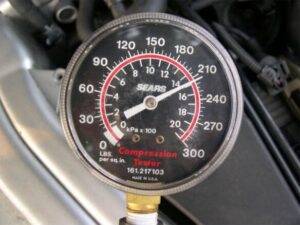
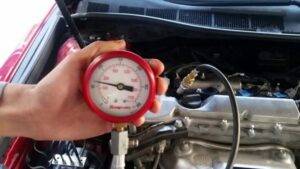
A Low, Snap Test Reading
If a snap reading is low (much less than 80% of cranking compression), look for air intake problems.
Such as:
- Severe carbon deposits on intake valves.
- Worn camshaft lobes.
- Worn valve guides and springs.
- Rocker or push rod problems.
- “shutter valve” miss positioned in the runners, of a variable runner intake system.
A High, Snap Test Reading (running dynamic compression test)
If its significantly higher (over 80% of cranking compression), it means the air is not leaving the cylinder properly. So, look for problems, on the exhaust side.
Such as:
- Worn cam lobes.
- Bent pushrods.
- Collapsed lifters.
But, if the snap readings are all high, look for exhaust restrictions. Such as, a clogged catalytic converter or muffler.
A Low Idle And Snap Test Reading
So, these types of numbers, show that the cylinder is (not holding compression properly). Look for issues.
Such as:
- Slightly bent or burned valves.
- Excessive carbon buildup, on valves or seats.
- Worn valve guides and springs.
- Scored, cylinder walls.
- A leaking head gasket.
NOTE: Consequently, a cylinder leak down test will narrow down, where the leakage is coming from.
Conclusion
So, as you can see, information gathered from a running dynamic compression test, can be very helpful. For instance, when diagnosing, engine misfire issues. And, another great test to, help solve engine problems.
Thank You !



